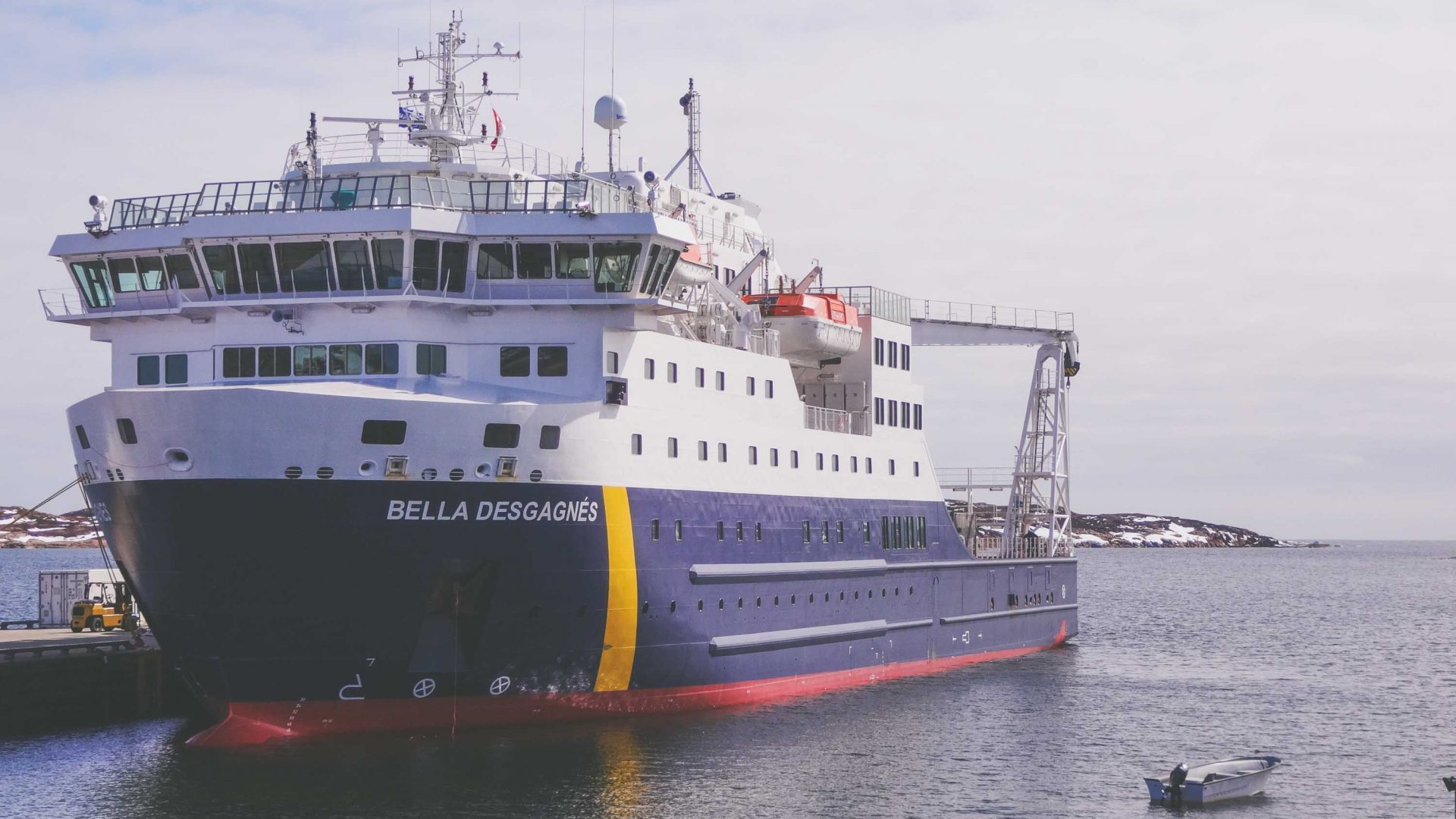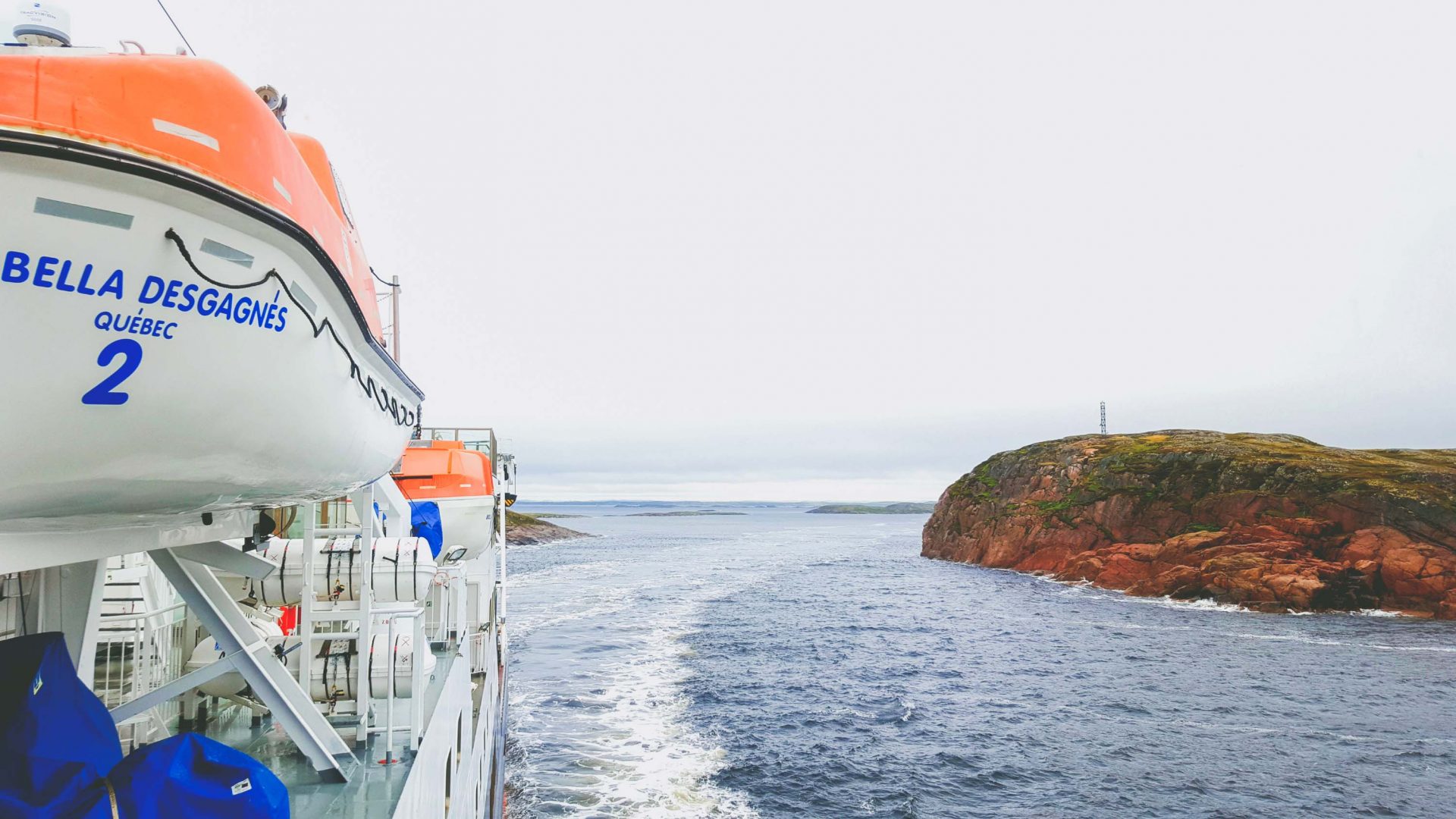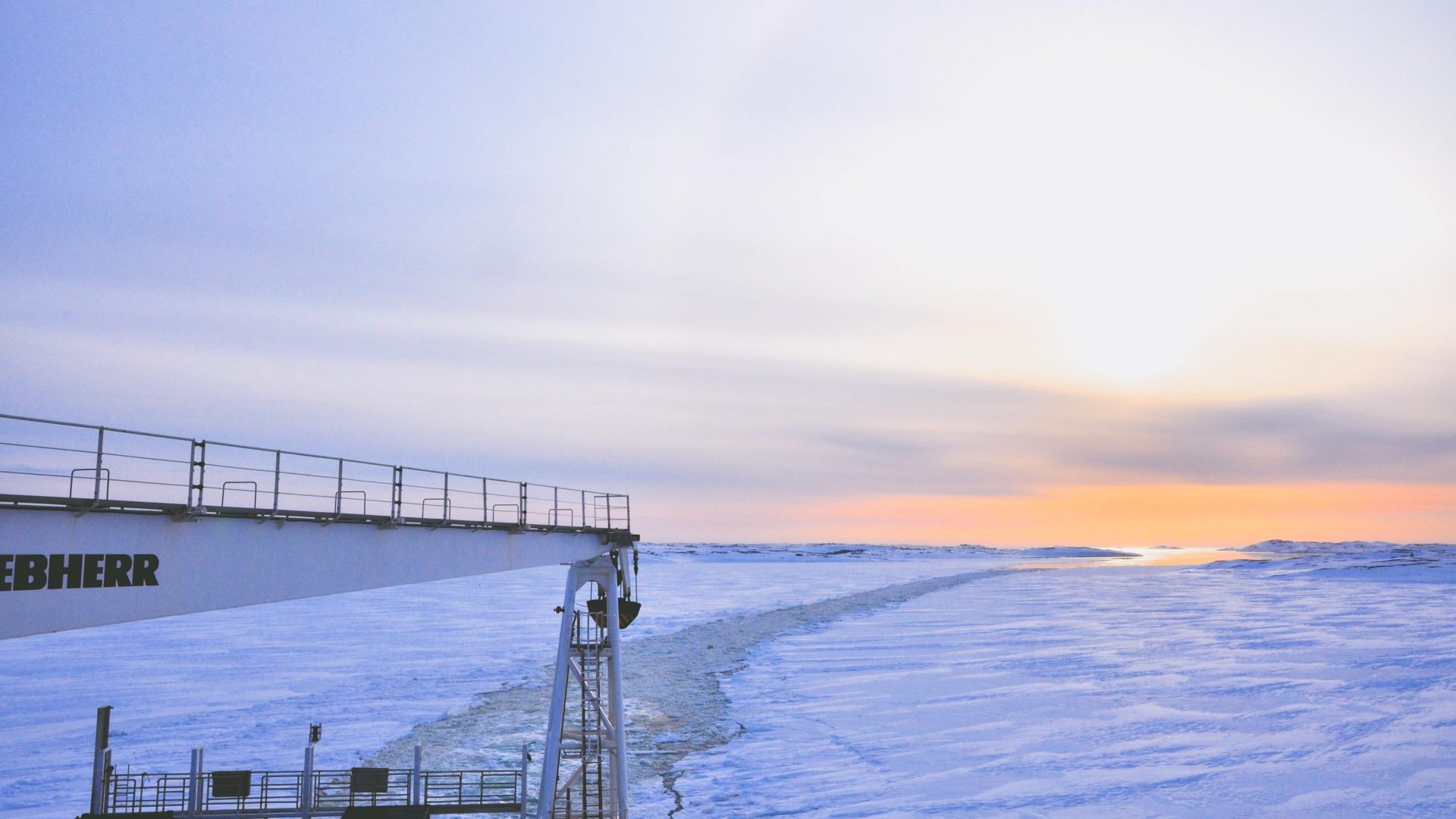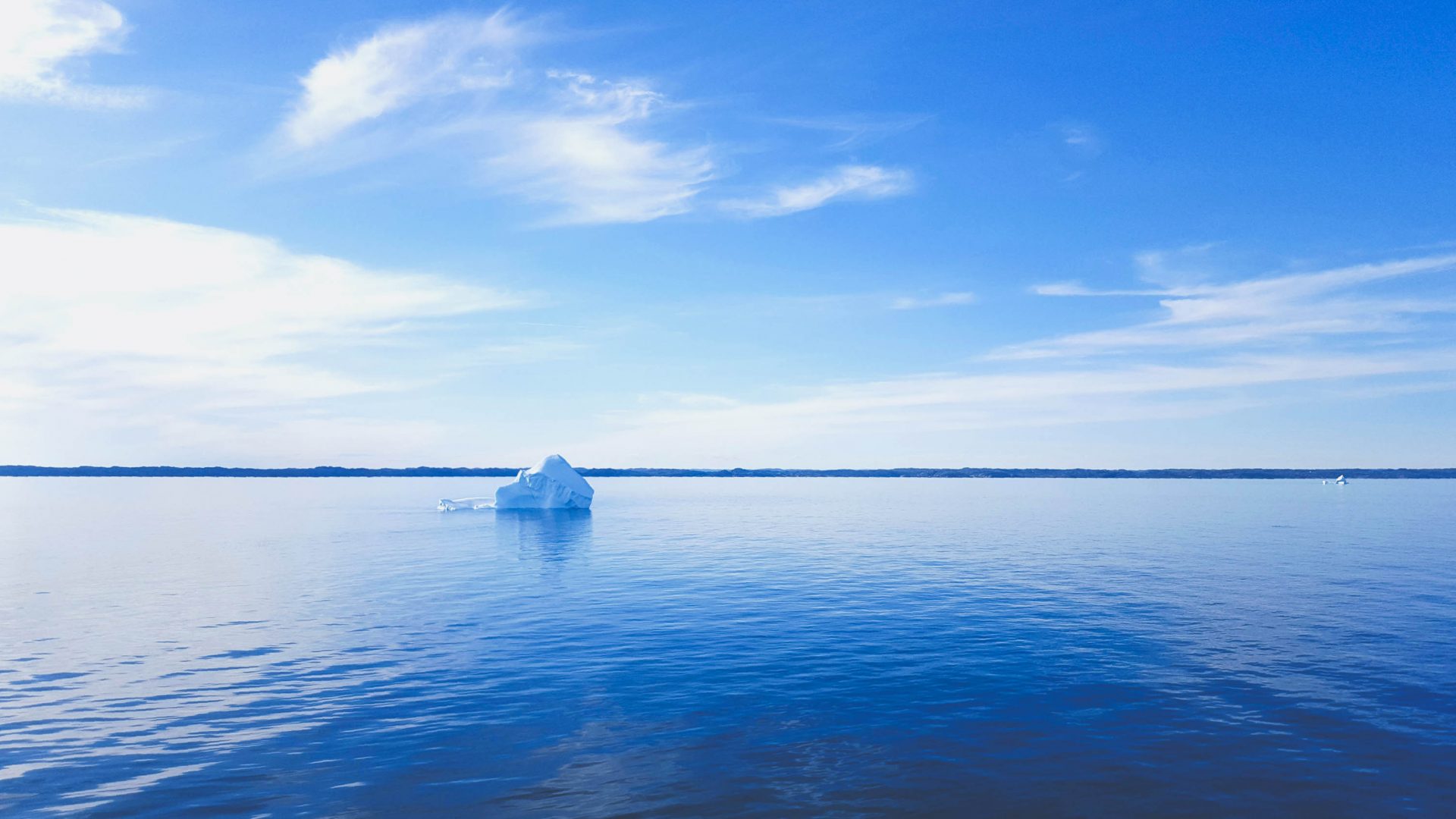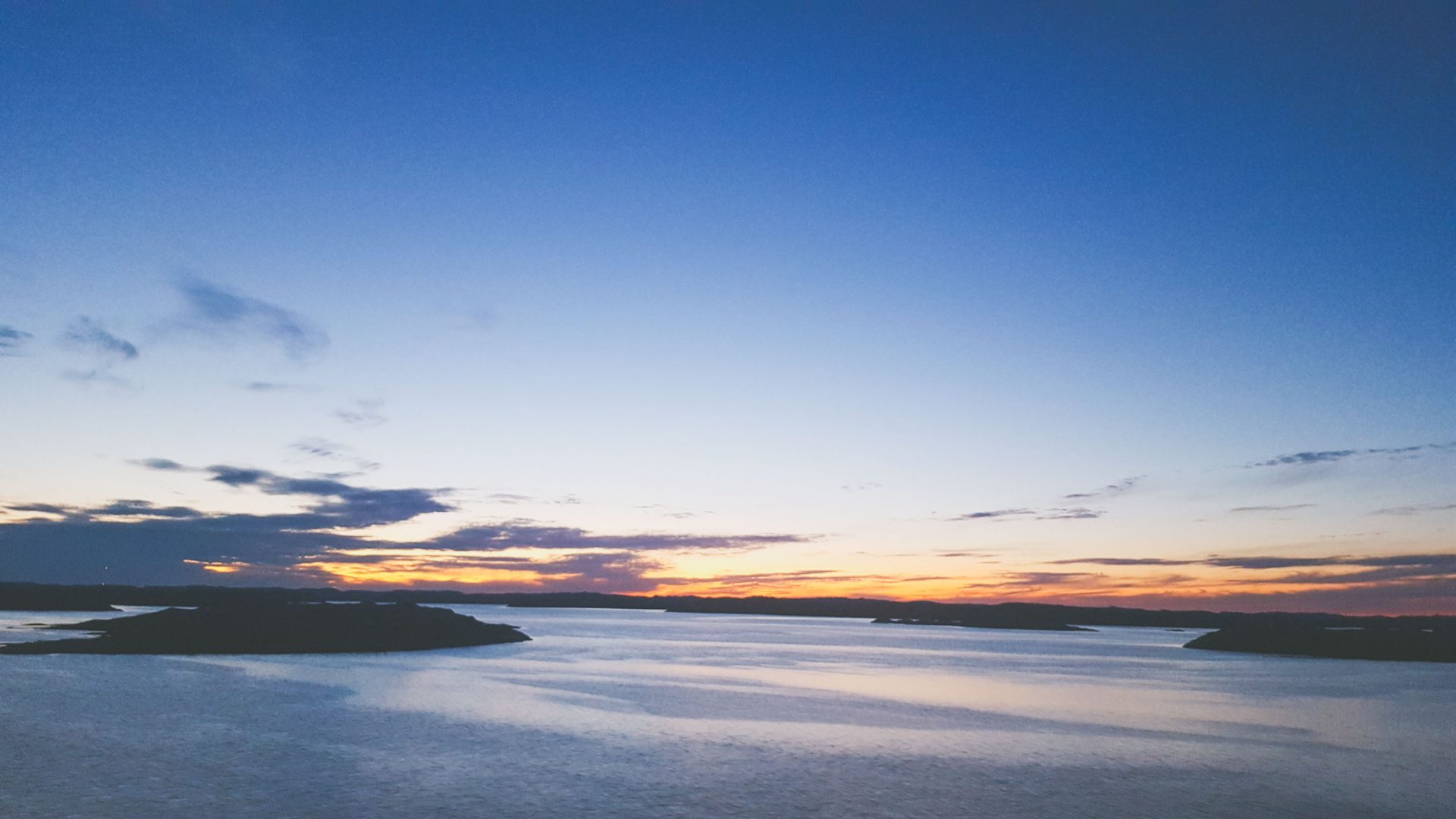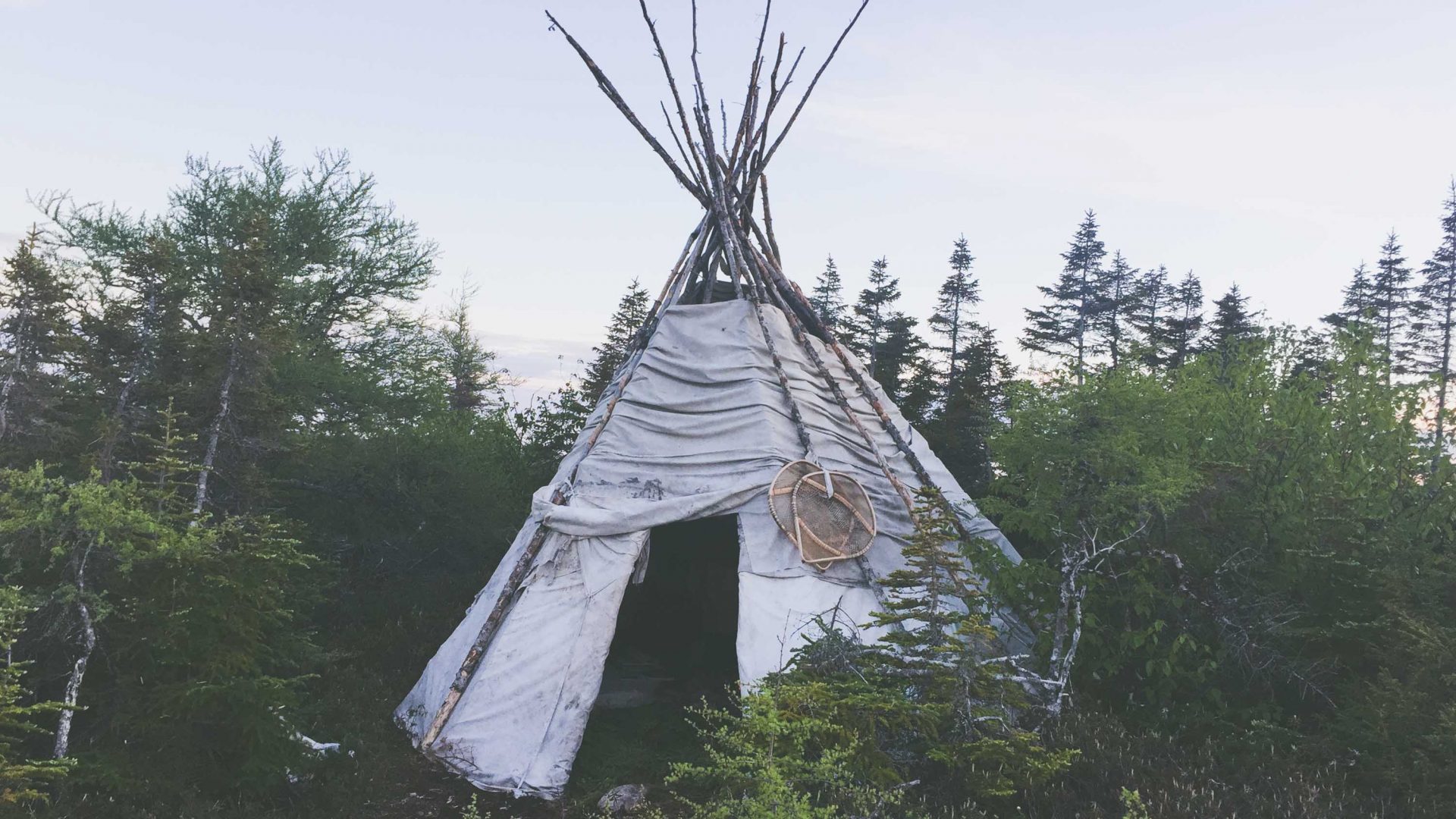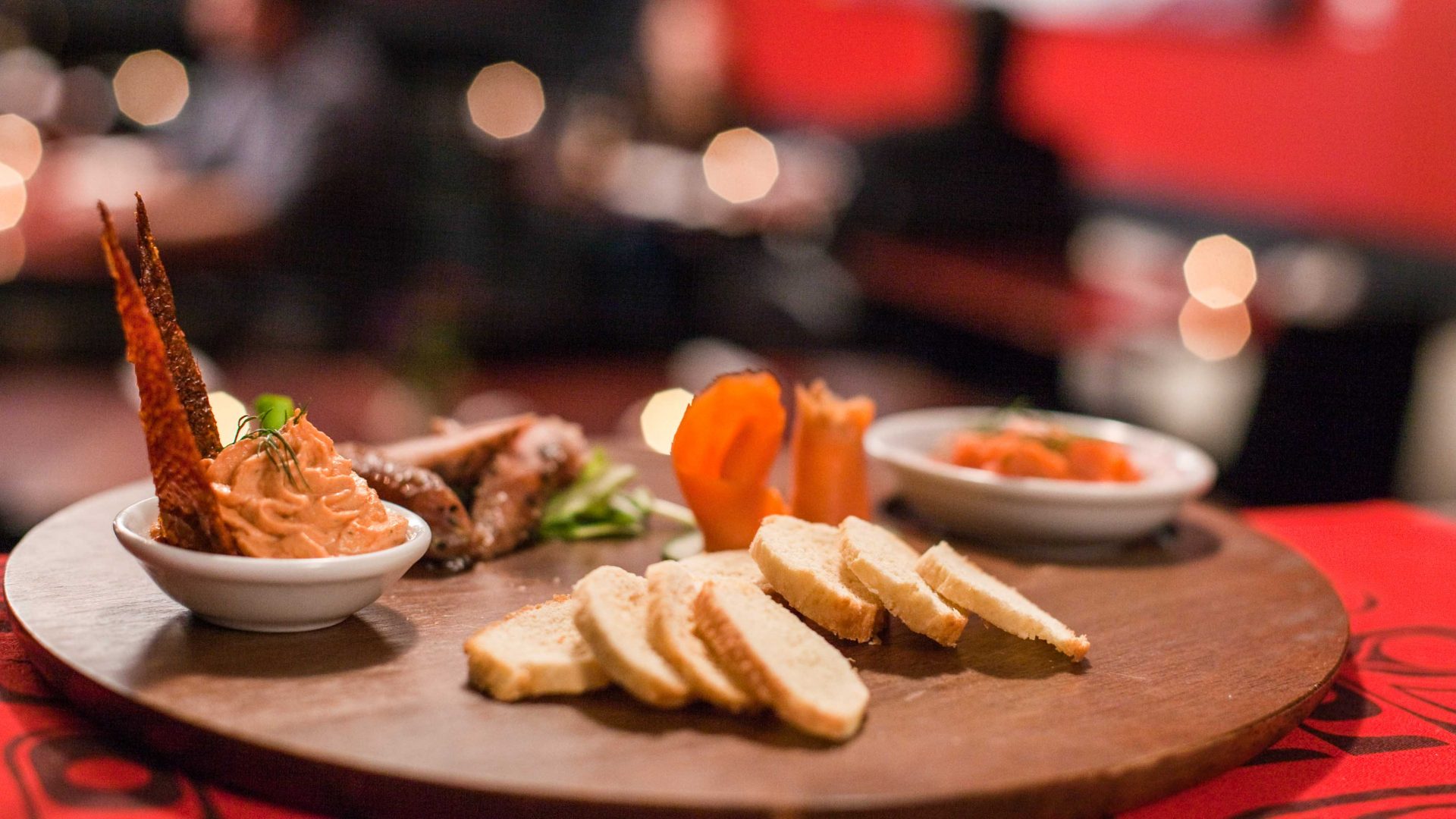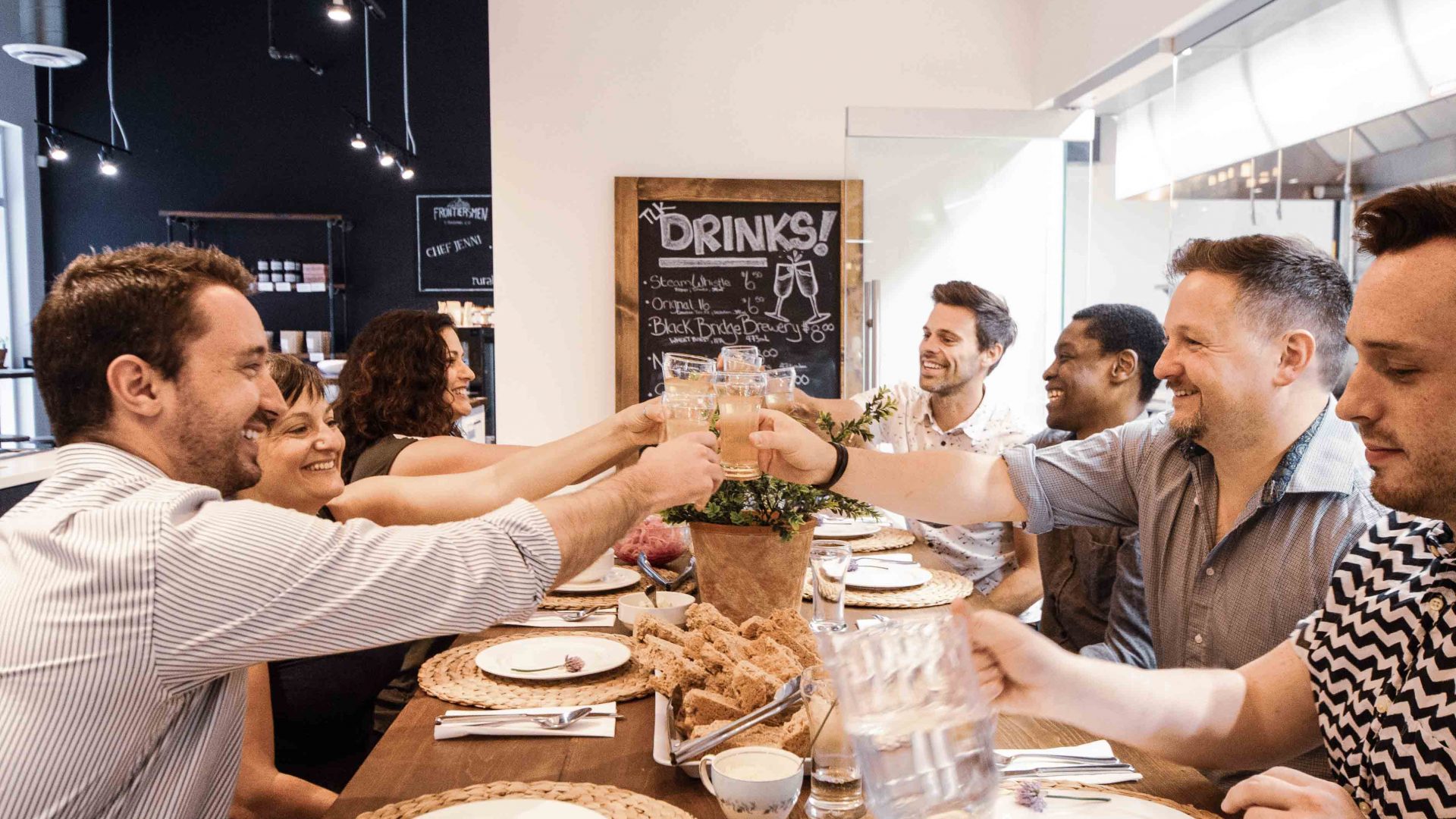The best way to navigate Canada’s mighty St. Lawrence river? By cargo ship, of course—Tim Johnson traces a shipping route that delivers essential goods to remote First Nations and Québécois Canadians.
At this point, here on the south shore, it seems a little ridiculous to call the St. Lawrence a river.
One of Canada’s great waterways—the one that links the Great Lakes with the North Atlantic and brought European explorers like Jacques Cartier and Samuel de Champlain deep into the heart of this part of the New World—it cleaves a massive divide into two provinces on the eastern end of the country. And when the mighty St. Lawrence reaches Rimouski, in Quebec’s Bas-Saint-Laurent region, you can scarcely see across it.
Sailing east from here, it only gets bigger, and wider, and stronger, eventually emptying into a gulf of the same name. But across on the north shore, the population thins out, just a string of small villages separated by forest and bush so complete it could swallow you whole. Living in relative isolation, each one of these communities occupies its own little world.
And then the road ends. “After that, you need to travel by snowmobile, plane, or this vessel,” says Francis Roy, president of Relais Nordik, the company that owns and operates the MV Bella Desgagnes as he gives me a tour of the relatively small ship. “And then you’ll really feel the difference. French, English and First nations—the Lower North Shore is a mixture of cultures.”
RELATED: Road tripping Canada’s surf highway
Boarding in Rimouski, I’m about to sail northeast, a 2,200-kilometer round-trip, for a week on the Bella. A workhorse of a vessel, the 97-meter ship can carry almost 400 guests, both in passenger decks lined with airline-style seats and 63 private cabins, sailing to the edge of the Far North, ferrying both vacationers to Canada’s maritime provinces and locals between remote communities.
Many of the latter belong to Quebec’s First Nations; tiny, isolated spots rich in history and culture. I’m here to sail to the Labrador border (and back), connecting with indigenous and Québécois Canadians, seeing the diversity in their communities—and along the way becoming more than slightly obsessed with the cargo.
As we proceed east toward the Gulf of St. Lawrence, the coastline fleeing from sight on both sides, we see corners of the country rarely spotted by even adventurous Québécois. I settle into my functional cabin, sleeping well on the waves, occasionally awakened in the middle of the night by the slight movement of the ship. There’s no casino or swimming pool, so I content myself with conversation, up on the top decks or while eating meals with other guests in the dining room.
RELATED: The resurgence of Canada’s First Nations cuisine
And at each stop, I disembark and take a tour, unpolished little excursions organized for a minimal fee by local residents to give us something to do while they unload and load the cargo.
It’s always clear that the guides are proud of their towns (and their resilience). On 222-kilometer-long Anticosti Island, I spot wild deer wandering right through the heart of the main (and only) village, Port-Menier, and learn that while 216 residents live here, the island is home to more than 200,000 deer.
In one such village, La Romaine, we board a short yellow school bus, defying the foul weather that has closed in, oppressive clouds and heavy rain. Bumping along, we learn some of the darker chapters in the history of the area. As we pass the local Catholic church with its knotty-line altar, our guide tells us how, for decades, local kids were separated from their families and forced to attend ’residential schools’ where abuse was common and children were barred from speaking their own language or going home.
Later, at Saint-Augustin, a brief stop without a tour, I walk up an incline to a tipi set up within view of the ship, and push through the language barrier to speak with an Innu man. The Innu, or Montagnais, are the Indigenous people from this part of Quebec, which they know as Nitassinan (‘our land’), and the man has set up in that spot with his family to help share his culture with visitors. He shows a small group of us a few traditional tricks, including how to cook a meal over a fire, before we need to chase the setting sun back to the Bella before she casts off again.
We reach the road again at Blanc-Sablon, population 1,200, and the terminus of our journey. Meaning ‘white sand’, the shores here are lined with beaches and—despite its subarctic latitude—Caribbean-blue waters. A busy port-of-call over the years for whalers, sailors, and cod and lobster fishermen, archaeology has revealed settlement here for some 8,000 years, back to the Basque (sailors from the Basque, Spain, whaled and fished Newfoundland from 1525) and beyond.
Most of the holidaymakers on board disembark here, waiting on the shore for their SUVs and Subarus to be dropped down onto the dock by the crane. Most of them will drive out of the box and over to the next slip, boarding the big ferry and heading for Newfoundland, just across the Strait of Belle Isle.
But not me. I stand there, still in awe of all that cargo, watching the crane swing container after container back on board, ready to load up and head all the way back to Rimouski.




